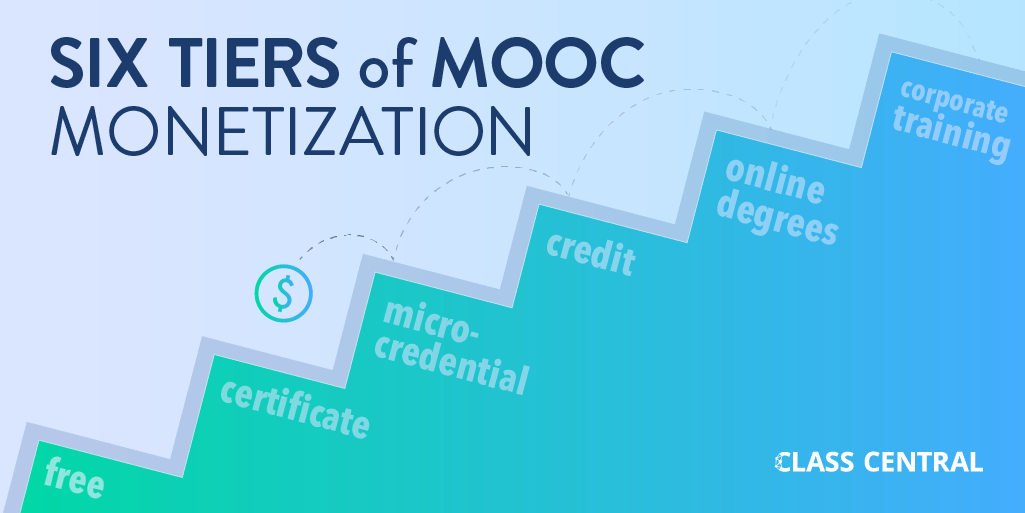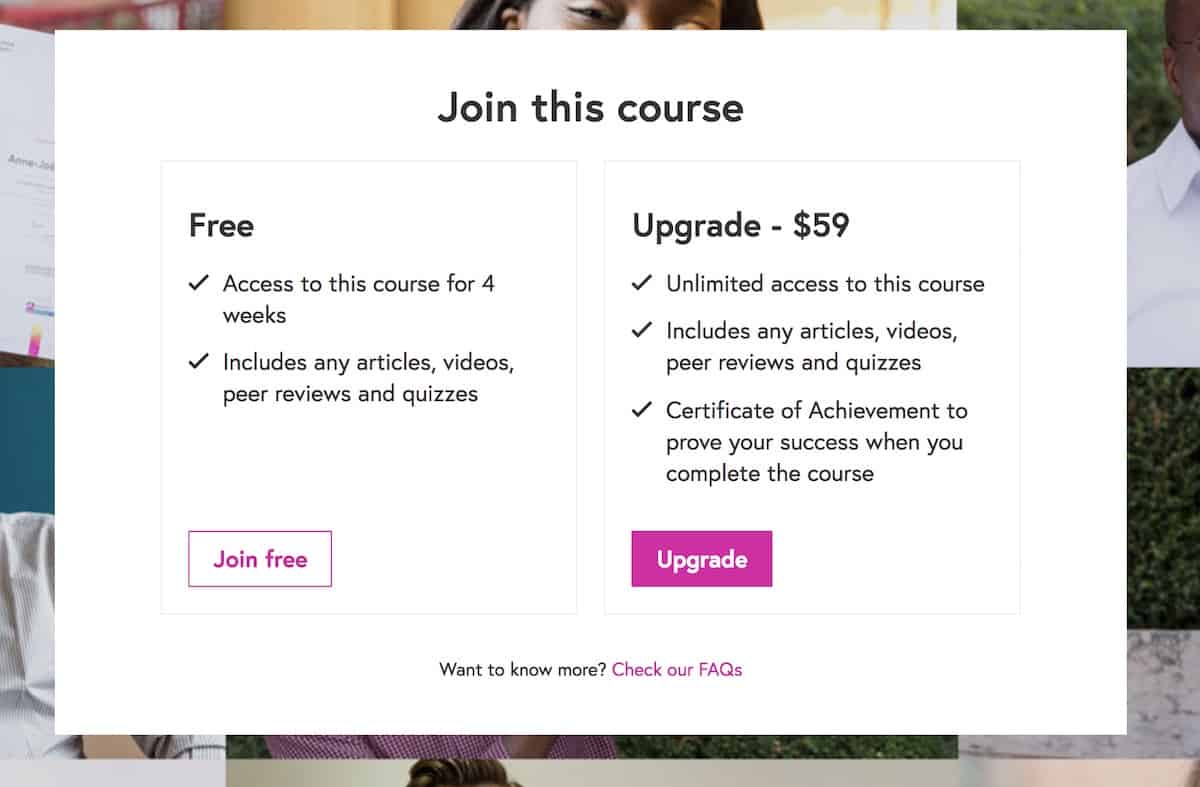6 Biggest MOOC Trends of 2017
MOOCs on campus, a product at every price point, content paywalls, and more.
This article is just one in our 2017 MOOC Roundup Series. Find the whole series of articles here, and discover everything MOOCs in 2017 — from the most popular classes, to overviews on developments in MOOC platforms, to looking at the MOOC future.
As the modern MOOC movement reaches six years of age, we share six trends affecting the industry. In keeping with the MOOC platforms’ continued quest for sustainable revenue models, most of these trends have to do with finding product-market fit, figuring out how (and whom) to charge (and for what). Who knows, 2017 may have been the year MOOCs became big business.
1. A product at every price point

Originally, all MOOCs were offered as free courses. While content varied greatly from course to course, MOOC providers essentially offered a single type of product: university courses packaged for online audiences and offered free of charge. The big MOOC providers now have developed products and services that range in price from free (or partially free) to millions of dollars.
Class Central has identified six different tiers that MOOC providers monetize on: free (or free to audit), certificate, micro-credential, university credit, online degrees, and corporate training. Each tier of pricing adds some value on the tiers below. Essentially, the same product (the one that anyone can register for, free of charge) is being monetized at different pricing levels, with the free product acting as a marketing channel that feeds customers into other higher priced products.
Read Class Central’s in-depth analysis of this trend.
2. Content Paywalls

When MOOCs first started out, they were all completely free. Their free-ness, in fact, was what distinguished MOOCs from other kinds of online courses. However, as the MOOC platforms search for sustainable business models, we have increasingly seen content placed behind paywalls. 2017 saw a continuation of the shrinking of free, as we have discussed in previous analysis. MOOCs now exist along a spectrum, with fully free courses at one end (yes, they do still exist) and completely paid online courses at the other end.
Coursera, has put graded assignments behind paywalls, FutureLearn has developed a time-based paywall, and Udacity (after proclaiming MOOCs are dead) seems to have given up on the whole concept of free and aggressively moving towards monetizing content. Though edX hosts paid-only courses, they remain the only platform that still offers most of its courses for completely free (minus the free certificate).
Read Class Central’s in-depth analysis of this trend.
3. MOOCs find their audience: Professional Learners

The narrative in early days of MOOC space was around the disruption of universities. Six years later, we know that MOOCs are not going to lead to the university’s demise. However, according to the previous CEO of Coursera, Rick Levin, while MOOCs may not have disrupted the higher education market, they are disrupting the labor market. The real audience for these courses is not the traditional university student but what Levin calls the “lifelong career learner,” someone who might be well beyond their college years who takes online courses with the goal of achieving professional and career growth.
Read Class Central’s in-depth analysis of this trend.
4. Online Degrees and Corporate Training
The MOOC platforms’ entry into the markets for online degrees and corporate learning isn’t a new trend. However, this year saw a few new developments, and even a few milestones achieved. Quite simply, online degrees and corporate training are existing markets worth billions of dollars, and MOOC providers want a slice of that.
Several new MOOC-based online degrees (or plans to launch online degrees) were announced in 2017. More than 7000 students are enrolled in these online degrees and the total potential revenue exceeds $65 million.
On the corporate training side, Coursera ended 2017 with more than 500 companies signed up for its Coursera for Business service, up from 30 last year. EdX for Business is now working with 40 companies.
Read Class Central’s in-depth analysis of this trend.
5. Increased Flexibility and Convenience
As for the past several years, MOOC providers have continued to make their product more flexible and convenient. Scheduling tweaks have made it possible for many MOOCs to be available throughout the year, so that learners can start immediately.
Read Class Central’s in-depth analysis of this trend.
6. MOOCs Are Showing Up On Campus
Up to now, efforts to offer university credit for MOOCs have been targeted towards students who have not enrolled in on-campus degree programs at the universities that produced the MOOCs in question. Now, for the first time, we are seeing examples in which on-campus students have the option to earn credit from MOOCs, even from universities other than the one they attend.
In the US, for a certain course at Georgia Tech and MIT, students were given a choice: enroll in the traditional on-campus course, or sign up for a parallel version of the class that would be completely online. Meanwhile, in the Netherlands,TU Delft ran a pilot to let their students earn credit from MOOCs offered on edX by other universities, via a Virtual Exchange program. At the end of 2017, TU Delft signed an agreement with 8 other universities. Now, students from this entire group of universities can earn credit for each others’ MOOCs. The universities participating in this program are: the Delft University of Technology (TU Delft), the Ecole Polytechnique Fédérale de Lausanne, Wageningen University and Research, Rice University, the University of Queensland, the Australian National University, the University of Adelaide, the Hong Kong University of Science and Technology, and Leiden University.
At MIT and Georgia Tech, MOOCs Are Showing Up On Campus — Class Central
Virtual Exchange Programme
Tags







Muvaffak GOZAYDIN
Thanks Shah
It is a gtreat article. Very informative . My main concern is 18-24 years olds who cannot go to college since it is very expensive . Or they go to a second class cheap college for waste of time and money . My dream is
” Top 200 universities would provide online degree programs same as oncampus courses by the same professors at 80-90 % reduced price like Georgia Tech . These 200 first class universities now have 5 million enrollment . They can create an online enrollment of 10 million at a low cost . Then no need for Federal Loans which is close to $ 1.5 billion now .
My another question is ” Should all 18-24 years olds must go to college , is there some intellectual levels to be accepted by good colleges , such as at least a SAT score of 1.000 or so “